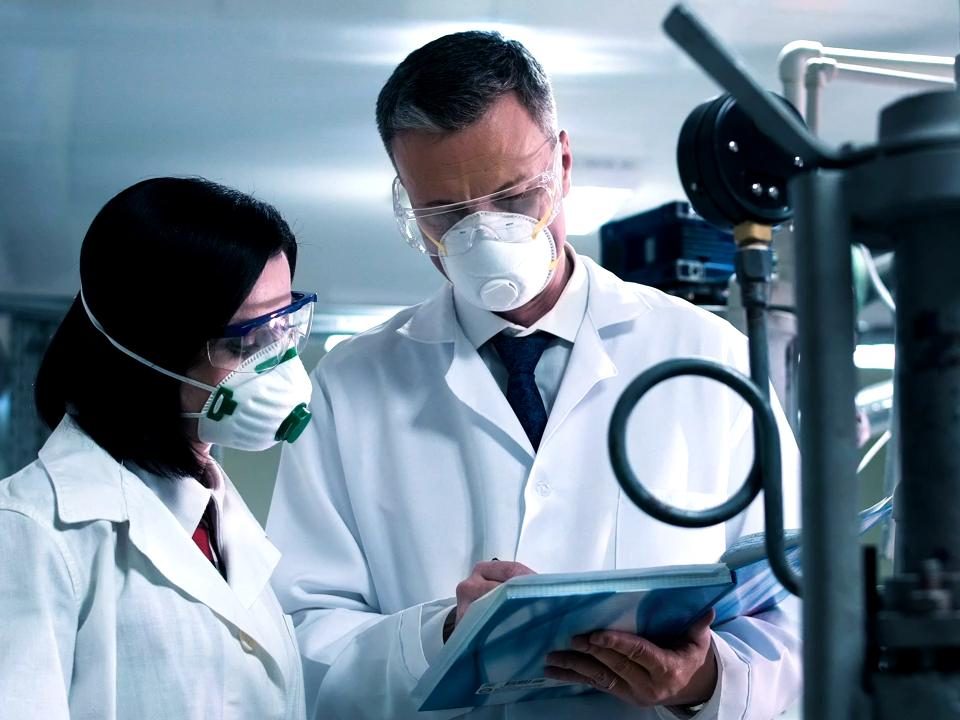Chemical Exposure Risks: Handling and Storing Hazardous Materials on Construction Sites – The Safety Master

Handling Sodium Cyanide: Safety Precautions in Gold Extraction Processes – The Safety Master
February 23, 2024
Ethylene Oxide Sterilization: Ensuring Worker Safety in Healthcare Facilities – The Safety Master
February 24, 2024Construction sites are bustling hubs of activity, where the symphony of hammers, drills, and heavy machinery harmonizes with the bustling of workers. Amidst this organized chaos lies an often-overlooked threat: hazardous chemicals. In this guide, we’ll delve into the intricacies of chemical exposure risks on construction sites and how to master safety protocols to ensure the well-being of workers and the environment.
Introduction
What are Chemical Exposure Risks?
Construction sites harbor an array of substances that pose potential harm if not handled with care. From corrosive acids to flammable solvents, these hazardous materials can cause severe health issues and environmental damage if not managed properly.
Importance of Safety Measures
Prioritizing safety isn’t just about complying with regulations; it’s about safeguarding lives. Implementing stringent safety measures mitigates the likelihood of accidents and protects workers from harm.
Understanding Hazardous Materials
Types of Hazardous Materials
Hazardous materials encompass a broad spectrum, including toxic, flammable, reactive, and corrosive substances. Understanding their properties is crucial for safe handling and storage.
Common Chemicals on Construction Sites
From paints and adhesives to fuels and pesticides, construction sites host various chemicals. Identifying these substances and assessing their risks is fundamental to crafting effective safety protocols.
Risks Associated with Chemical Exposure
Health Hazards
Exposure to hazardous chemicals can result in a myriad of health issues, ranging from skin irritation and respiratory problems to severe neurological damage and cancer. Workers must be aware of these risks and equipped with preventive measures.
Environmental Hazards
Improper disposal or leakage of chemicals can contaminate soil, water bodies, and the atmosphere, posing threats to ecosystems and human health alike. Responsible handling and containment are imperative to mitigate environmental damage.
Safety Measures for Handling Chemicals
Personal Protective Equipment (PPE)
Equipping workers with appropriate PPE such as gloves, goggles, and respirators forms the first line of defense against chemical exposure. These protective gears create a barrier between the worker and the hazardous substance.
Proper Storage Techniques
Storing chemicals in designated areas with adequate ventilation, spill containment measures, and segregation based on compatibility minimizes the risk of accidents. Following manufacturer guidelines and regulatory standards is paramount.
Emergency Response Plans
Preparedness is key to mitigating the impact of chemical accidents. Establishing robust emergency response plans, including evacuation procedures and first aid protocols, ensures swift and effective action in the event of a mishap.
Training and Education
Importance of Training
Providing comprehensive training to workers on chemical hazards, safe handling practices, and emergency procedures enhances awareness and fosters a culture of safety. Regular refresher courses keep knowledge current and skills sharp.
Identifying Hazards
Educating workers on recognizing chemical hazards, such as labels, safety data sheets (SDS), and warning signs, empowers them to make informed decisions and take appropriate precautions in their daily tasks.
Regulatory Compliance
OSHA Regulations
The Occupational Safety and Health Administration (OSHA) sets forth regulations aimed at protecting workers from chemical hazards. Compliance with OSHA standards not only ensures legal adherence but also promotes a safer work environment.
EPA Guidelines
The Environmental Protection Agency (EPA) mandates guidelines for the proper handling, storage, and disposal of hazardous materials to prevent environmental contamination. Adhering to EPA regulations is vital for eco-conscious construction practices.
Best Practices for Construction Sites
Risk Assessment
Conducting thorough risk assessments prior to commencing work identifies potential hazards and enables the implementation of targeted preventive measures. Regular reassessments adapt to evolving conditions and ensure continued safety.
Regular Inspections
Routine inspections of storage areas, equipment, and PPE verify compliance with safety protocols and detect any deviations or deficiencies that require rectification. Proactive maintenance minimizes risks and fosters a proactive safety culture.
Communication Among Workers
Encouraging open communication among workers fosters a collaborative approach to safety. Establishing channels for reporting hazards, sharing best practices, and addressing concerns cultivates a sense of ownership and responsibility for collective well-being.
Case Studies
Successful Implementation of Safety Measures
Examining instances where stringent safety protocols were adhered to and their positive outcomes underscores the efficacy of proactive risk management. These success stories serve as inspiration and models for emulation.
Consequences of Neglecting Safety Protocols
Conversely, exploring the repercussions of neglecting safety measures brings to light the devastating impact of chemical accidents. Learning from past mistakes underscores the importance of diligence and compliance with safety regulations.
Conclusion
Prioritizing safety when handling hazardous materials on construction sites isn’t just a legal obligation; it’s a moral imperative. By understanding the risks, implementing robust safety measures, and fostering a culture of vigilance, we can ensure the well-being of workers and the sustainability of our environment.




